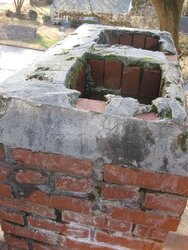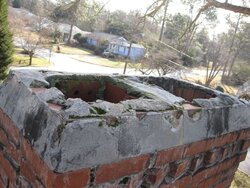I've got an unused fireplace/chimney at the front of the house - the one used for fires is a more recent pre-fab towards the back.
The unused one is fully exposed to the elements, and I've recently discovered that in heavy rains, waters goes right into it and seeps out the mortar joints of the bricks within the attic. This leads to damp insulation and even some slight pooling above plaster in ceilings.
Plans are to never use this functionally again, so I'd like it to be relatively water-tight up top. Any tips.
The unused one is fully exposed to the elements, and I've recently discovered that in heavy rains, waters goes right into it and seeps out the mortar joints of the bricks within the attic. This leads to damp insulation and even some slight pooling above plaster in ceilings.
Plans are to never use this functionally again, so I'd like it to be relatively water-tight up top. Any tips.



